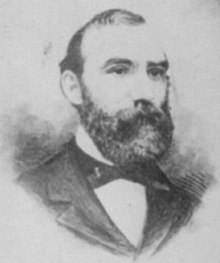
Dwight Lyman Moody, also known as D. L. Moody, was an American evangelist and publisher connected with Keswickianism, who founded the Moody Church, Northfield School and Mount Hermon School in Massachusetts, Moody Bible Institute and Moody Publishers. One of his most famous quotes was "Faith makes all things possible... Love makes all things easy." Moody gave up his lucrative boot and shoe business to devote his life to revivalism, working first in the Civil War with Union troops through YMCA in the United States Christian Commission. In Chicago, he built one of the major evangelical centers in the nation, which is still active. Working with singer Ira Sankey, he toured the country and the British Isles, drawing large crowds with a dynamic speaking style.
Gospel music is a traditional genre of Christian music, and a cornerstone of Christian media. The creation, performance, significance, and even the definition of gospel music varies according to culture and social context. Gospel music is composed and performed for many purposes, including aesthetic pleasure, religious or ceremonial purposes, and as an entertainment product for the marketplace. Gospel music is characterized by dominant vocals and strong use of harmony with Christian lyrics. Gospel music can be traced to the early 17th century.

Ira David Sankey was an American gospel singer and composer, known for his long association with Dwight L. Moody in a series of religious revival campaigns in America and Britain during the closing decades of the 19th century. Sankey was a pioneer in the introduction of a musical style that influenced church services and evangelical campaigns for generations, and the hymns that he wrote or popularized continued to be sung well into the 21st century.

Frances Jane van Alstyne, more commonly known as Fanny J. Crosby, was an American mission worker, poet, lyricist, and composer. She was a prolific hymnist, writing more than 8,000 hymns and gospel songs, with more than 100 million copies printed. She is also known for her teaching and her rescue mission work. By the end of the 19th century, she was a household name.

Benjamin Carl Unseld, better known as B. C. Unseld, was a gospel music teacher, composer, and publisher.

"Rock of Ages" is a popular Christian hymn written by the Reformed Anglican minister Augustus Toplady.

Philip Paul Bliss was an American composer, conductor, writer of hymns and a bass-baritone Gospel singer. He wrote many well-known hymns, including "Hold the Fort" (1870), "Almost Persuaded" (1871); "Hallelujah, What a Saviour!" (1875); "Let the Lower Lights Be Burning"; "Wonderful Words of Life" (1875); and the tune for Horatio Spafford's "It Is Well with My Soul" (1876). Bliss was a recognized friend of D. L. Moody, the famous Chicago preacher. Bliss died in the Ashtabula River Railroad Disaster on his way to one of Moody's meetings. An outspoken Abolitionist, he served as a Lieutenant during the American Civil War.
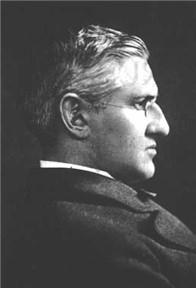
"It Is Well With My Soul" is a hymn penned by hymnist Horatio Spafford and composed by Philip Bliss. First published in Gospel Hymns No. 2 by Ira Sankey and Bliss (1876), it is possibly the most influential and enduring in the Bliss repertoire and is often taken as a choral model, appearing in hymnals of a wide variety of Christian fellowships.

James Martin Gray was a pastor in the Reformed Episcopal Church, a Bible scholar, editor, hymn writer, and the president of Moody Bible Institute, 1904-34.
Baker Publishing Group is an Evangelical book publisher that discusses historic Christian happenings for its evangelical readers. It is based in Ada, Michigan and has six subdivisions: namely Bethany House, Revell, Baker Books, Baker Academic, Chosen, and Brazos Press.
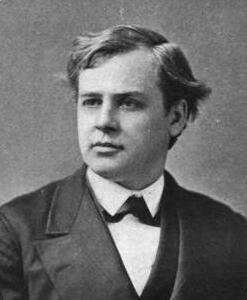
Adoniram Judson "A. J." Gordon (1836–1895) was an American Baptist preacher, writer, composer, and founder of Gordon College and Gordon–Conwell Theological Seminary.
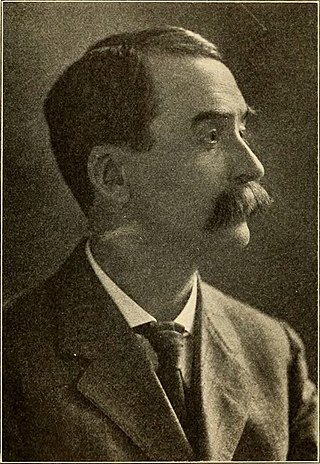
Charles Hutchinson Gabriel was a writer of gospel songs and composer of gospel tunes. He is said to have written and/or composed between 7,000 and 8,000 songs, many of which are available in 21st century hymnals. He used several pseudonyms, including Charlotte G. Homer, H. A. Henry, and S. B. Jackson.

William Lamartine Thompson was a noted American composer. He founded the W. L. Thompson Music Company and tried his hand with some success at secular compositions before finding his forte in hymns and gospel songs.
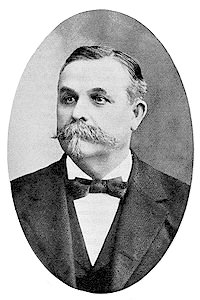
James McGranahan was a nineteenth-century American musician and composer, most known for his various hymns. He was born 4 July 1840, in West Fallowfield or Adamsville, Pennsylvania, and died 9 July 1907 at his home in Kinsman, Ohio.

Edwin Othello Excell, commonly known as E. O. Excell, was a prominent American publisher, composer, song leader, and singer of music for church, Sunday school, and evangelistic meetings during the late nineteenth and early twentieth centuries. Some of the significant collaborators in his vocal and publishing work included Sam P. Jones, William E. Biederwolf, Gipsy Smith, Charles Reign Scoville, J. Wilbur Chapman, W. E. M. Hackleman, Charles H. Gabriel and D. B. Towner.
"O That Will Be Glory", also known as "The Glory Song", with words and music by Charles H. Gabriel (1856-1932), was first published in 1900. In 1914, J. H. Hall claimed that the song had been translated into at least 17 languages and that at least 17 million copies of the song were then in print. From 1930 to 1965, "O That Will Be Glory" was the theme song of evangelist G. E. Lowman's international radio broadcast. The musical score of the song can be found online in Excell's Praises.

George Coles Stebbins (1846–1945) was a gospel song writer. Stebbins was born February 26, 1846, in Orleans County, New York, where he spent the first 23 years of his life on a farm. In 1869 he moved to Chicago, Illinois, which marked the beginning of his musical career.
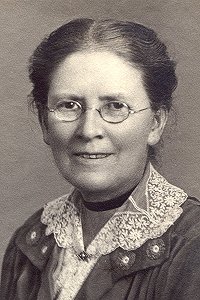
Ada Ruth Habershon was an English Christian hymnist, best known for her 1907 gospel song "Will the Circle Be Unbroken?" for which the tune was composed by Charles H. Gabriel.
"Softly and Tenderly" is a Christian hymn. It was composed and written by Will L. Thompson in 1880. It is based on the Bible verse Mark 10:49.

M. E. Willson was an American gospel singer, lyricist, composer, and evangelist. She contributed words and music to most of the gospel song-books published between 1881 and 1893.
